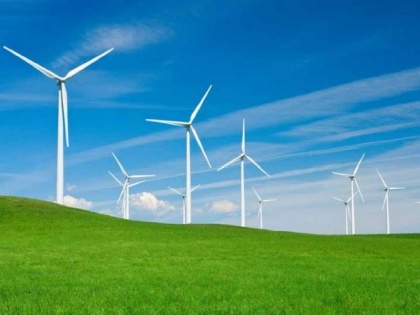Payment risk resurfaces via discoms for wind projects: Crisil
By ANI | Published: March 13, 2021 04:38 PM2021-03-13T16:38:15+5:302021-03-13T18:17:42+5:30
Payment risk from discoms has resurfaced for wind power projects with four key states -- Madhya Pradesh, Maharashtra, Rajasthan and Andhra Pradesh -- that act as a counterparty to around 40 per cent of the overall wind capacity toting up dues of Rs 5,450 crore to 156 renewable projects.

Payment risk resurfaces via discoms for wind projects: Crisil
Payment risk from discoms has resurfaced for wind power projects with four key states -- Madhya Pradesh, Maharashtra, Rajasthan and Andhra Pradesh -- that act as a counterparty to around 40 per cent of the overall wind capacity toting up dues of Rs 5,450 crore to 156 renewable projects.
That is 50 per cent increase in the dues year-on-year, according to global analytics company Crisil.Wind power projects constituting nearly three-fourth of the total private renewable (wind and solar) capacity of these four states have borne a larger share of the payment delays.
The reason being bulk of these are old projects with high tariffs of over Rs 4.5 per unit handed out under the earlier FIT3 regime. These tariffs are higher than the average power purchase prices of these states.
Crisil's Senior Director Msh Gupta said the aggregate receivables period from these state discoms has increased to nine months from invoice date compared with three to five months on average at March 2020. For projects in Andhra Pradesh, it has stretched to as much as 18 to 19 months.These payment delays are due to persisting weak financial health of discoms which deteriorated in 2020 due to lower collections from customers amid the pandemic. Although collections have recovered from the lows of the first quarter of the current fiscal, these remain below the pre-pandemic levels.So far, wind power developers have been able to manage cash-flow pressures on servicing with the help of the Reserve Bank of India-announced moratorium on debt servicing and surplus liquidity from previous fiscal.
However, sustained delay of one more quarter could test the liquidity buffers of six to nine months in these projects, making them vulnerable to delays.This can put nearly Rs 30,000 crore of debt in 9.5 gigawatt of wind power projects at risk of delays.
The remaining 6.5 GW of wind power projects are present in large groups and hence have greater flexibilities to manage delays, given their balance sheet strength and diversity from other counterparties in overall portfolio.Crisil Director Ankit Hakhu said: "Going forward, we expect the liquidity position of discoms to improve with collection efficiencies coming back to normal along with the release of state government subsidies, which typically picks up pace towards the end of a fiscal. This should help restore the payment cycle to pre-pandemic levels."This unpredictability and volatility in payment pattern to renewable projects is a key risk for operational projects.
To mitigate the issue, the government has bid out larger proportion of capacities through central counterparties -- National Thermal Power Corporation and Solar Energy Corporation of India -- which have maintained stable payment track record to developers despite variability in payments from underlying discoms.
As the proportion of these central counterparties increases in the overall installed capacity base, the risk of payment delays in the sector is likely to decline, said Crisil.
( With inputs from ANI )
Disclaimer: This post has been auto-published from an agency feed without any modifications to the text and has not been reviewed by an editor
Open in app